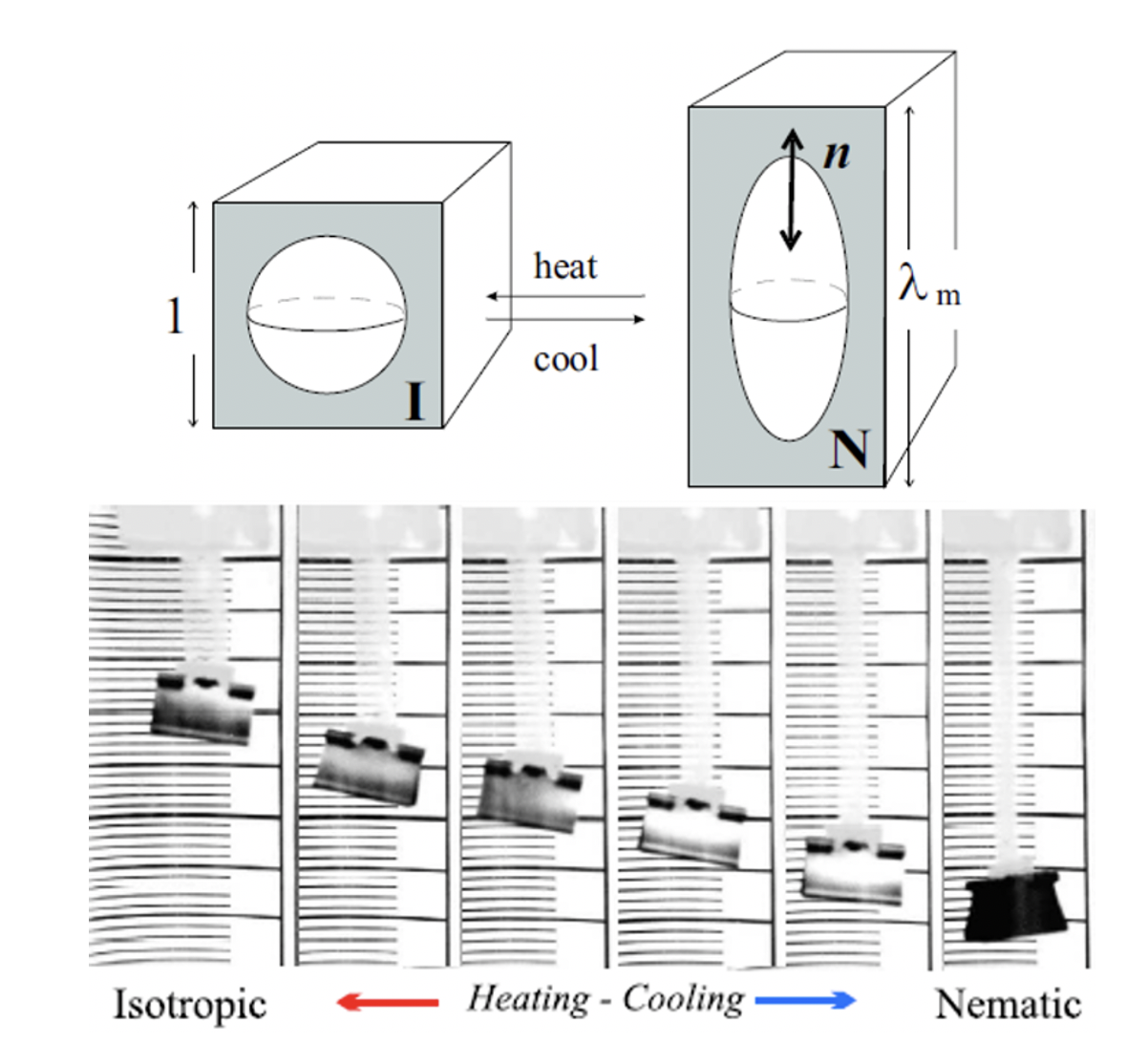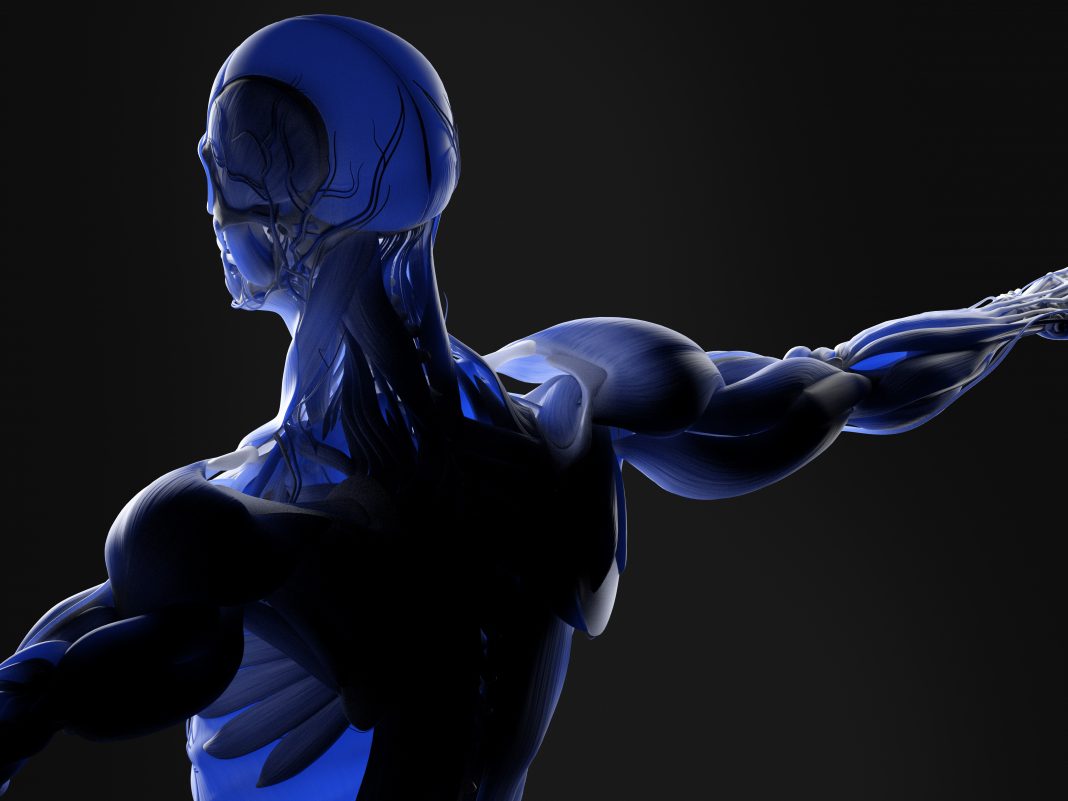Liquid Crystal Elastomers (LCE) have been invented over 30 years ago, and ever since were considered a highly promising material system for soft actuators and artificial muscles
The ‘smart materials’ is a cliché used broadly in many areas of modern technology, in each case meaning different things. Liquid Crystal Elastomers (LCE) have been invented over 30 years ago, and ever since been considered a highly promising material system for soft actuators and artificial muscles. The fully-reversible mechanical response induced by heat, or by light, is based on intrinsic material properties of Liquid Crystal Elastomers (rather than complex engineering of interacting mechanical parts), namely the coupling of two different degrees of local freedom: the translational (responsible for strength and elasticity) and the orientational (arising from liquid crystalline order, and responsible for the equilibrium shape).
Liquid Crystal Elastomer actuation
Altering the degree of local order, by heating or by other stimuli, results in the matching change of natural shape of the material – which could then be designed to exert a force or produce mechanical work. The remarkable characteristics of LCE actuation (fully reversible action; large-amplitude, with a stroke of 5%-300%; stress-strain-speed response almost exactly matching the human muscle) make it highly attractive in biomedical engineering, soft robotics, smart textiles, and other fields.

Yet, there is a profound difficulty (a bottleneck), which remains the reason why this concept has not found its way into any practical devices and applications in all these years. LCE actuation requires alignment of the local anisotropy (monodomain structure) in the permanently crosslinked polymer network – which has been impossible to achieve in any useful large-scale configuration except the thin flat film, due to the unavoidable restrictions of two competing processes: orientational alignment and network crosslinking. Several spectacular demonstrations of actuation by bending the thin film have been put forward, including self-propelled robots, yet one cannot expect to obtain any significant mechanical force or extract work out of such bending motion.


Understanding LCE vitrimers
Recently, we made a breakthrough, developing LCE vitrimers (polymer networks covalently crosslinked by a bond-exchange reaction). Vitrimers are much more stable than other transient elastomer networks, but still allow thermal re-moulding (making the material fully renewable). This makes it possible to create complex shapes with intricate local alignment (which are impossible in traditional permanently elastomers).
The University of Cambridge, through its ERC-funded APRA project, and the technology spinoff Cambridge Smart Plastics are now jointly developing this new elastomer concept, bridging across from the academic research to marketable technology. We are tuning the material design for robust Liquid Crystal Elastomer vitrimers, imparting photo-actuation capacity with a controlled wavelength, and finally utilising them in practical-engineering actuator applications where the reversible mechanical action is stimulated by light, solvent exposure, or more traditionally – heat/cool cycles.
These applications include (but not limited to): continuously spinning motor to convert ‘waste heat’ into mechanical work, dynamic Braille display changing the tactile characters on demand, capillary pump and toggle flow switch for microfuidics, and active textiles woven from Liquid Crystal Elastomer fibres and yarn that reversible change their 3D shape on heating and cooling. All of these directions offer radically new ideas to industrial product designers, which are only now beginning to realise the opportunities brought about by liquid crystalline elastomers.

https://www.smart-plastics.co.uk/

This work is licensed under Creative Commons Attribution-NonCommercial-NoDerivatives 4.0 International.


